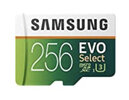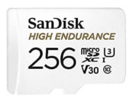After I thought this issue was dead and gone there was an interesting development. I contacted Amazon about a warranty exchange on the Samsung card and was told that since it's beyond the 30 day return window any exchange would have to be done with the manufacturer. I was in the process of getting all my documentation together (sales receipt, specifications, test results, etc.).
After testing with the X2Pro+ I also did some with the DC as a point of comparison and noticed that after being in the DC the write performance on the card went from ~1.8MB/s to ~8.7MB/s - interesting to say the least since all I did when going to the DC was an in-camera format.
This led me to do a more rigorous and controlled test protocol which included eventually doing a low-level format using SDFormatter. After the low-level format write performance improved exponentially (almost twice as fast as the SanDisk card I bought as a replacement). It certainly appears there was a problem with the card initially that was corrected by the low-level format (but still has me scratching my head as to why it went from ~1.8MB/s to ~8.7MB/s just doing an in camera format in the DC).
The result summary is below. I ran multiple tests for each scenario but show only one of each since there was no meaningful difference between them. All testing done on the same computer, using the same adapter and same test parameters. (Redundant data redacted for readability.)
Samsung 512GB Test 1
-----------------------------------------------------------------------
CrystalDiskMark 3.0.3 x64 (C) 2007-2013 hiyohiyo
Crystal Dew World :
http://crystalmark.info/
-----------------------------------------------------------------------
* MB/s = 1,000,000 byte/s [SATA/300 = 300,000,000 byte/s]
Sequential Read : 85.084 MB/s
Sequential Write :
1.862 MB/s
Random Read 512KB : 76.900 MB/s
Random Write 512KB :
1.864 MB/s
Test : 100 MB [G: 0.0% (0.0/476.8 GB)] (x5)
Date : 2019/09/10 11:21:50
OS : Windows 7 Professional SP1 [6.1 Build 7601] (x64)
::::::::::::::::::::::::::::::::::::::::::::::::::::::::::::::::::::::::::
Samsung 512GB Test (After use in 'DC')
Sequential Read : 86.104 MB/s
Sequential Write :
8.729 MB/s
Random Read 512KB : 85.491 MB/s
Random Write 512KB :
8.153 MB/s
::::::::::::::::::::::::::::::::::::::::::::::::::::::::::::::::::::::::::
Samsung 512GB Test (After quick format with SDFormatter)
Sequential Read : 87.894 MB/s
Sequential Write :
8.649 MB/s
Random Read 512KB : 78.931 MB/s
Random Write 512KB :
8.172 MB/s
::::::::::::::::::::::::::::::::::::::::::::::::::::::::::::::::::::::::::
Samsung 512GB after low level format with SDFormatter
Sequential Read : 85.907 MB/s
Sequential Write :
76.343 MB/s
Random Read 512KB : 77.405 MB/s
Random Write 512KB :
44.613 MB/s
::::::::::::::::::::::::::::::::::::::::::::::::::::::::::::::::::::::::::
h2tstw after low level format with SDFormatter
Warning: Only 488287 of 488288 MByte tested.
Test finished without errors.
You can now delete the test files *.h2w or verify them again.
Writing speed:
66.2 MByte/s
Reading speed: 73.0 MByte/s
H2testw v1.4


